The iPad Pro Experiment: The Pencil arrives, and it's going to change my life
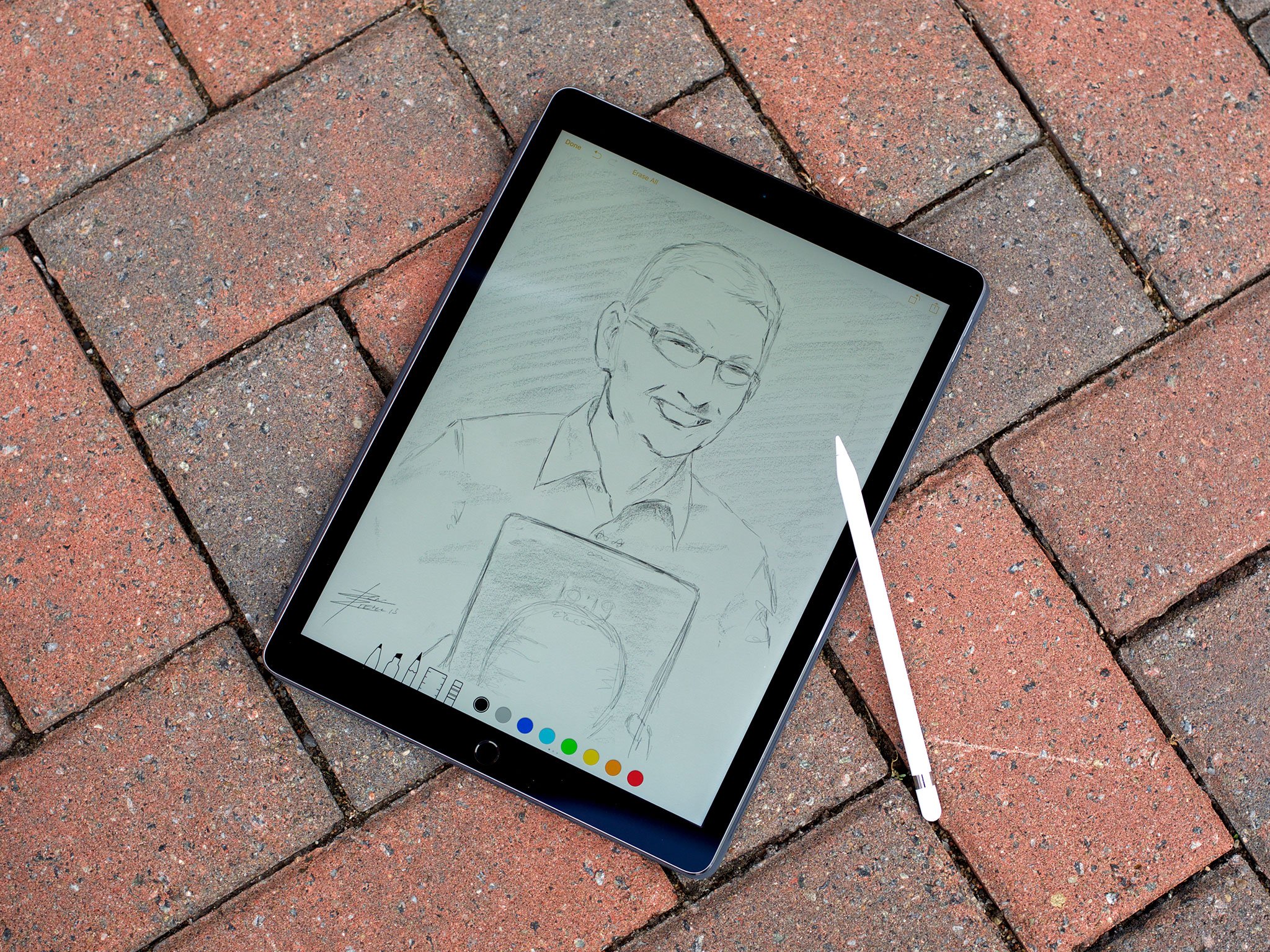
Hey, folks! It's been a few days, for which I apologize—I managed to get a hold of an Apple Pencil on Wednesday, and all writing time got thrown out the window in favor of some heavy-duty stylus testing. If you're an artist looking forward to hearing more about the iPad Pro, this is the journaling day for you.
But before we get to my excitement over styluses, I first had to do some cheating to record a podcast for my friends at Relay.fm.
On podcast cheating (and the iPad's lack of audio controls)
The iPad Pro has one big, gaping hole in its mission statement when it comes to my personal professional use case: audio controls. There are a fair amount of great iOS apps for editing and working with already-recorded audio; Six Colors' Jason Snell edited an entire The Incomparable podcast on his last week, for example.
But when it comes to actually being live on a podcast, or recording said podcast, iOS runs into more than a bit of trouble. Currently, the operating system only supports single-stream audio input and output: This means that a video in Safari can't play audio at the same time as Music. (It's also why, on your iPhone, your music cuts out when you open the Camera app.)
The same is true for input: You can only input audio to one program. If I record audio in GarageBand, that audio won't come through to listeners in Skype; if I Periscope something, I can't simultaneously record the audio in another app.
There are apps like Audiobus that attempt to fix this problem and provide a pass-through, but apps have to support it—and Skype does not.
Right now, the best way to record a remote podcast is to use two devices, old-school film style: run a recording app on your iPhone with your good microphone plugged in, and run Skype, Hangouts, or your other podcast application of choice on the iPad Pro. You'll get the good-quality audio for your recording, but that comes at the expense of passable default sound for your Skype and Hangout participants.
Master your iPhone in minutes
iMore offers spot-on advice and guidance from our team of experts, with decades of Apple device experience to lean on. Learn more with iMore!
I hate everything about this. It screams "clunky!", and doesn't feel like something I should be forced to do in the era of iPad Pro. Apps have come so far in the age of multitasking and cooperation, and I've been loving iOS 9's split screen features. But when you introduce audio recording or multi-stream playback into the equation, you fall back to the dark ages of silos and silence.
So I cheated.
Well, sort of. I am running this iPad Pro experiment to see if it can replace my laptop computer, after all; my iMac has all my high-end audio recording equipment on it, and I traditionally use it for all my podcasts.
So I opened up Edovia's Screens, fired up my Mac from my iPad, and used my tablet to control my mics and Skype conversation.
Okay, yeah, so it's cheating. But the iPad currently can't record multi-track Skype conversations, and because I was guest-starring on Upgrade, I didn't want to call in with shoddy iPad default audio.
On the upside, it allowed me to test out Screens on the iPad Pro. The VNC client has long been one of my favorite iPad apps: It works with incredibly low latency to let me access my Mac's screen from anywhere in the world. I use it constantly when I'm traveling across the country to grab files from my desktop, or adjust my media server. On the iPad Pro, the 21-inch screen looks gorgeous, and it feels almost manageable to use the computer without zooming in on parts of the screen.
It also returns me to the core of this iPad Pro experiment: The Pro may be able to replace my laptop, but I'm a Mac user to my core. I love my "truck" of a computer for all sorts of things—compositing and Final Cut Pro editing, if nothing else—and it's staying on my desk for quite some time.
As such, a big part of this experiment is not just how well the Pro replaces my laptop uses, but how it can integrate with the other technology in my life. This week excepted, I'm usually the kind of person who swaps between desktop and laptop frequently: Can the Pro work with that sort of lifestyle better than my laptop can?
I'm suspecting it might.
All that said, I'm not going for that sort of podcast insanity again: During the podcast, I bought a Shure MV51 for any future podcasting needs (including those of the iMore show later this week). I'm also going down to Florida for Thanksgiving and currently planning on bringing just the iPad Pro; no Mac can save me there. Instead, I'll suffer through the iPad-and-iPhone combo recording slog. For science!
Post-Relay show, I ended up doing a Google Hangouts-based iMore Show with Rene directly on the iPad—with, yes, default audio. In all honesty, I was mostly curious to see if I could join a Hangout On-Air from iOS and have it work reliably.
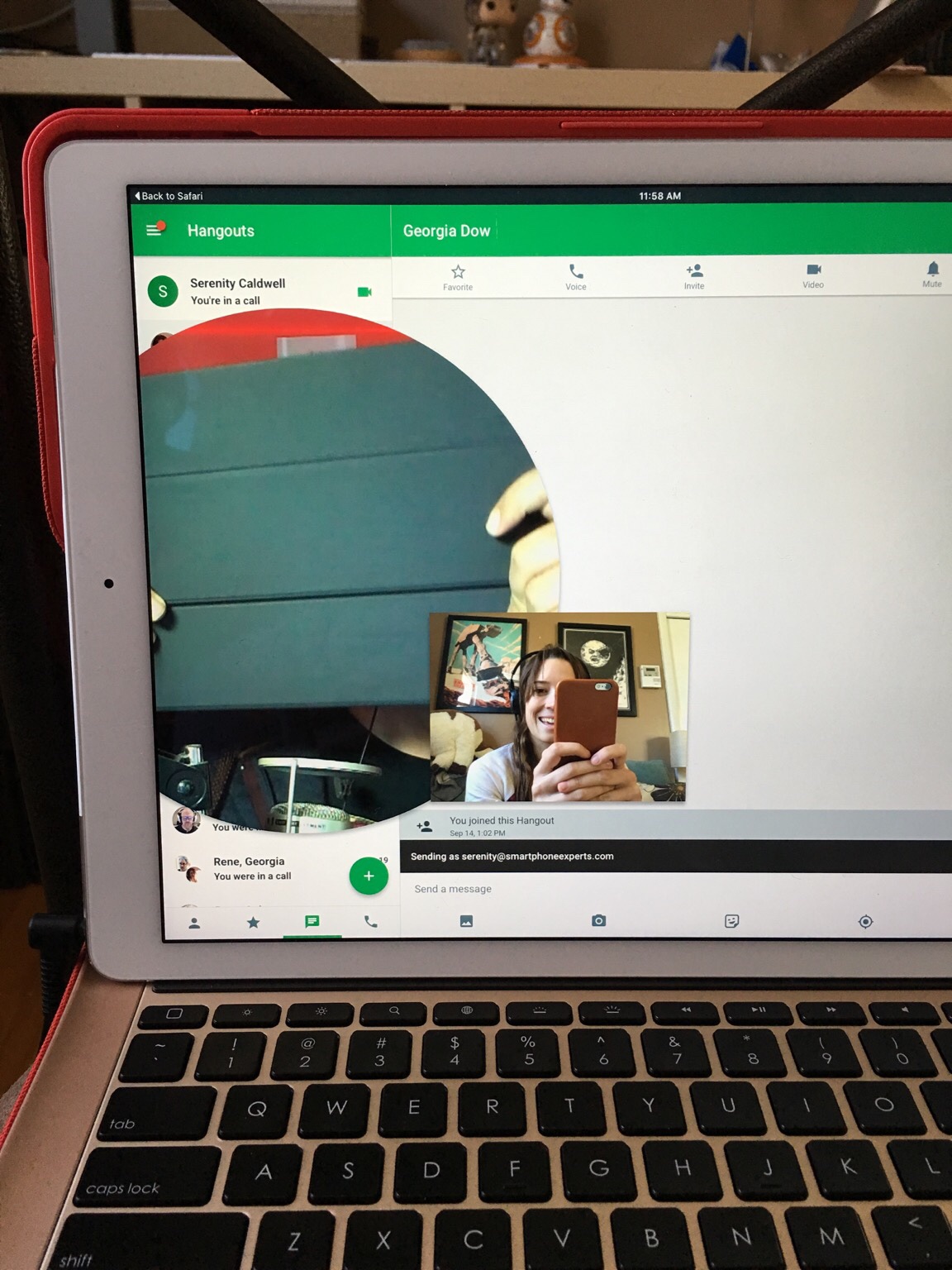
Experiment: Success! The Hangouts app hasn't been optimized, which stinks, and you can't split-screen apps nor use picture-in-picture to go to other programs. But joining Hangouts On-Air worked well.
One hardware annoyance: Trying to do a hangout and look at a camera on the left side of the screen is... weird. I'm so used to the camera at the top of the screen that the side-glancing is bizarre. Thankfully, Hangouts allowed me to reduce and reposition my call within the app itself, so I moved Rene's video feed over to the left side of the screen. It's not perfect, but a good substitute.
Drawing, writing, and drawing some more
Before I found out I'd be able to score a Pencil on Wednesday, I was still knee-deep in styluses. To prep for the Pencil's eventual arrival, I spent an inordinate amount of time sketching with my former top stylus picks for the iPad. For those curious, the top contenders in my arsenal:
On hand, I had 53's Pencil, Ten One's Pogo Connect 2, Adonit's Jot Dash, Studio Neat's Cosmonaut, and the Wacom Bamboo Alpha to do some testing. And, for a control group: I threw in an actual 8x11 sketchpad and a 4B pencil, too.
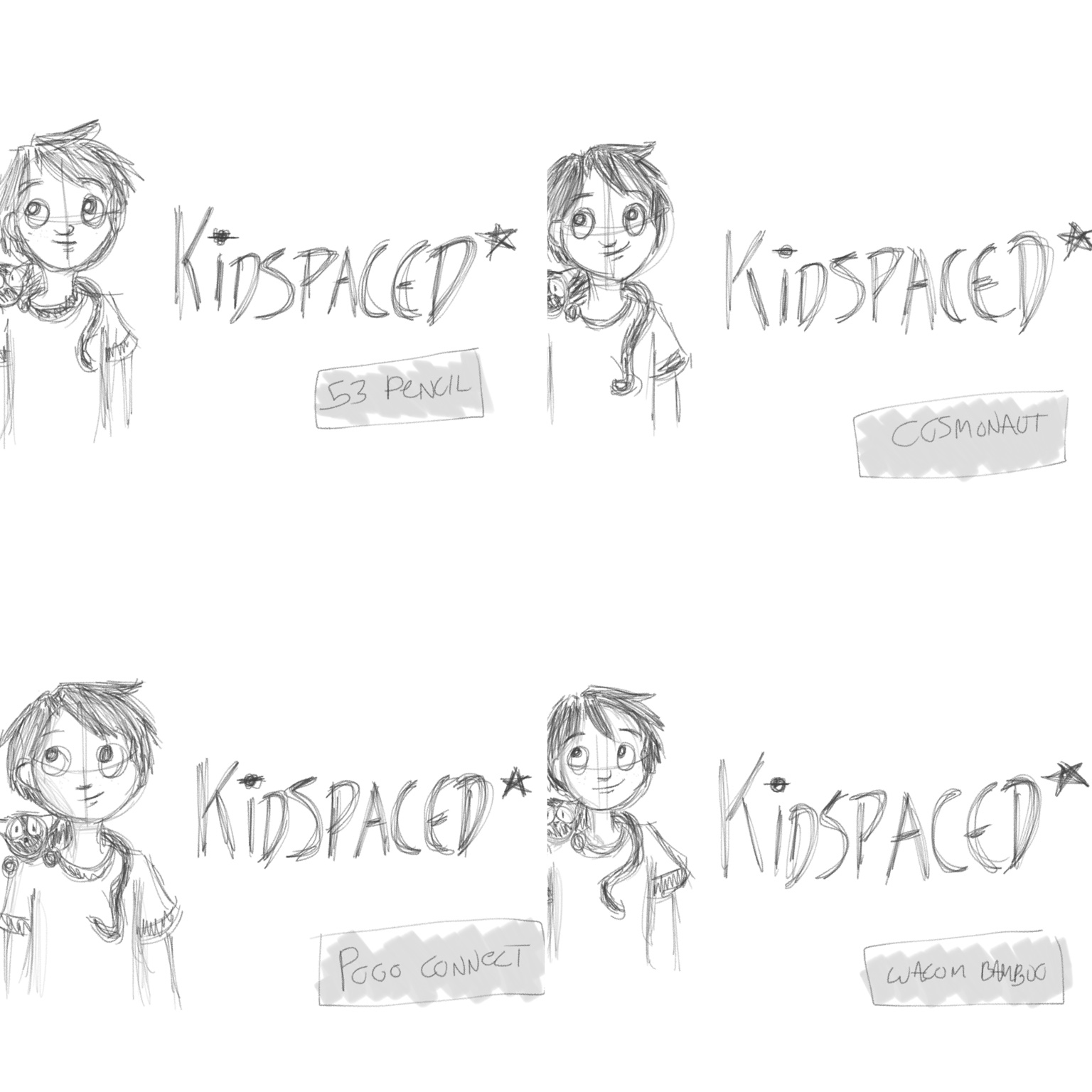
Throughout five years of iPad stylus testing, I've never been able to find a stylus that perfectly and comfortably replicates the feeling of drawing in a sketchbook. Precision and lag are the top two triggers: If a stylus can't repeatedly trace a small line—or does so slowly enough that I can't figure out how to continue my drawing—it breaks the illusion. And the illusion is a very precarious one.
Even Wacom's Intuos and Cintiq line, largely considered to be the gold standard when it comes to drawing digitally, feel like drawing with plastic on glass. No digital art company has come close to replicating the true feel of paper on pen; instead, they work as hard as possible to style the drawing experience, instead. If the software creates realistic enough lines that replicate your experience with paper, your brain ignores the strange feeling of drawing on glass.
I say all that so that you might understand: It's not that all the third-party iPad styluses have been bad. A lot of them provide decent accuracy for writing, even at smaller sizes, and great artists have done many wonderful things with them.
But after the first few rounds of iPads and styluses, the tech press and artists alike silently acknowledged that no pen would come close to touching Wacom's legacy without input from Apple itself. The iPad's screen was designed for fingers, not pens; and for a stylus to work properly, it had to pretend to be a finger-sized input device while trying to go for accuracy. Have fun with that compromise, designers!
As a result, the Jot Dash is an excellent on-the-go writing tool if you want precision but no pressure-sensitivity. The Cosmonaut's one of my favorite styluses for party doodling, and kids love it. 53's Pencil provides an extra level of brilliance to the company's already wonderful sketching app. The Pogo Connect offers lovely pressure-sensitivity across a bunch of apps with its SDK, and a couple of different brush nibs to try to replicate different pen "feels".
But none of them are game-changers. They're like keyboards for an iPad mini: Largely functional, but with major constraints. And while serious artists can do a lot with less-than-perfect tools, it's not an experience you actively seek out.
The iPad Pro screen does offer a huge helping hand to all of these third-party styluses. I noticed precision improvements across the board, though none got a big enough boost to make the stylus a truly great pen experience. But if you're not interested in waiting and spending $100 on an Apple Pencil, these $12-$75 options are great alternatives.
But you should be interested in spending $100. In fact, if you have an iPad Pro and have ever wanted to write or draw on a digital surface in your life, you owe it to yourself to go hunt one down right this second.
OMG PENCIL OMG (or why the Pencil is the best stylus I've ever used)
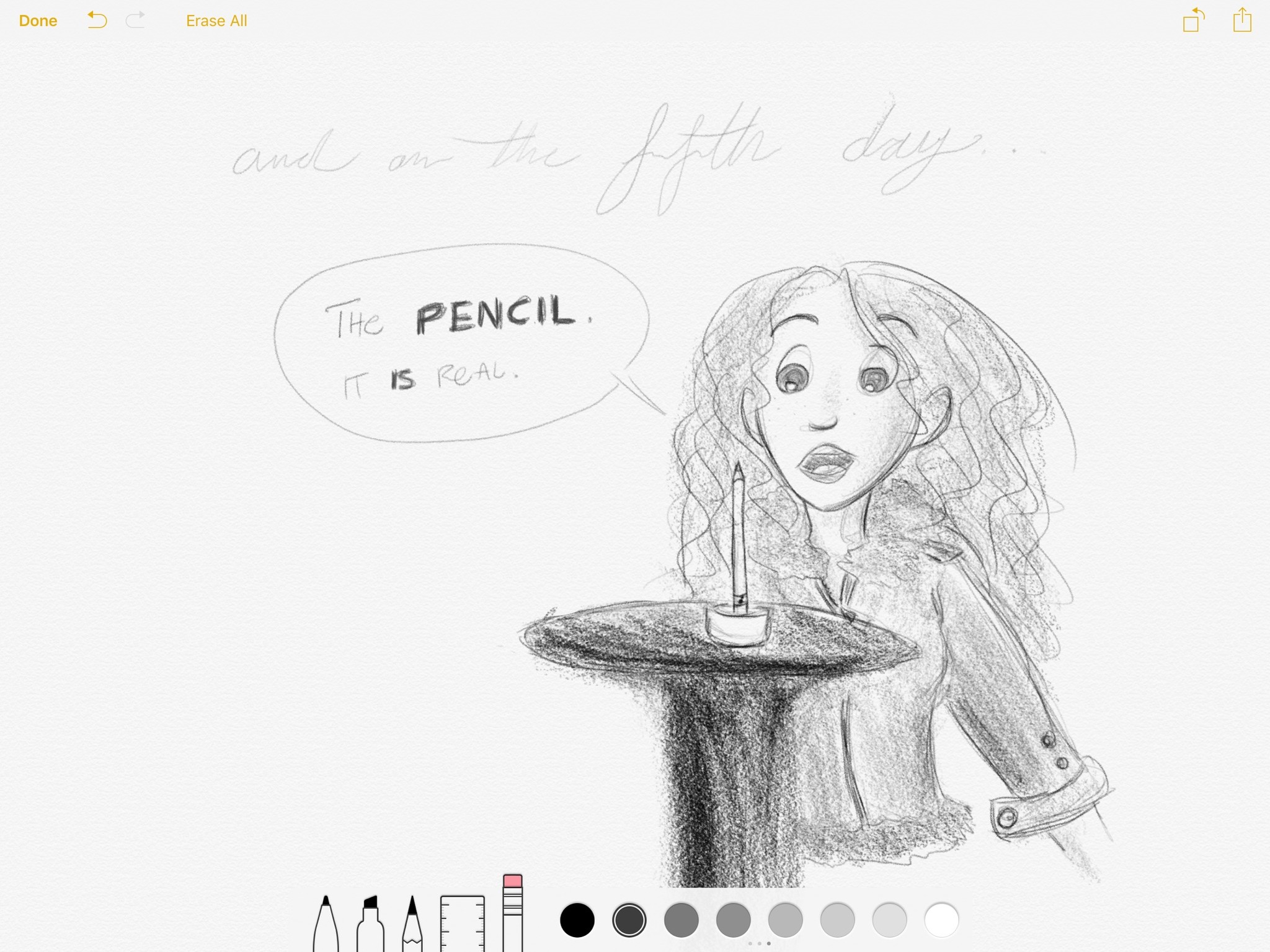
When I was 12, I belonged to one of the earliest of early attempts at a Web social media game. I was introduced to the kid-friendly site (ah, the pre-COPPA days!) by a couple of Caltech alums. There, you could create a digital avatar of yourself and decorate it with items designed by other players. Those avatars would chat and hang out in digitally-drawn "playgrounds" where anything potentially risqué was censored, complaining about homework and solving some of the site's science and math puzzles. (Does it surprise anyone I was a nerdy kid growing up?)
Once I found out you could earn "clams" to buy more for your avatar if you drew smart and funny things, however, I tried to learn everything there was to know about digital drawing. I convinced my parents to buy me an early-era Wacom tablet, but not after thousands of hours trying to draw on the trackpad of our Wall Street PowerBook.
At one point, thinking myself brilliant, I took a Newton stylus and tried to use it on the trackpad, tracing over something I'd drawn on paper. Needless to say, I was very put out when it didn't work.
This memory has stuck in my head for years. It's where my interest in drawing and sketching blossomed, even if I was initially wildly unsuccessful. And ever since, I've longed for a device that could truly let me draw digitally the way I tried to on paper.
TL;DR: I have been waiting for the Apple Pencil for 16 years.
It's not perfect. It still feels like plastic on glass, and until Apple figures out some Taptic Engine magic to convince our senses otherwise, it's going to remain that way.
But it does something heretofore unexpected: It beats Wacom at its own game. The Pencil is just as good a sketching tool as any Wacom pen. I don't care that we don't know its official pressure rating. It's right. Apple got it right. The pressure, the accuracy, the lag, the palm rejection. My brain is fully and thoroughly tricked into believing it's drawing on paper, and even the pen on glass sensation can't convince me otherwise.
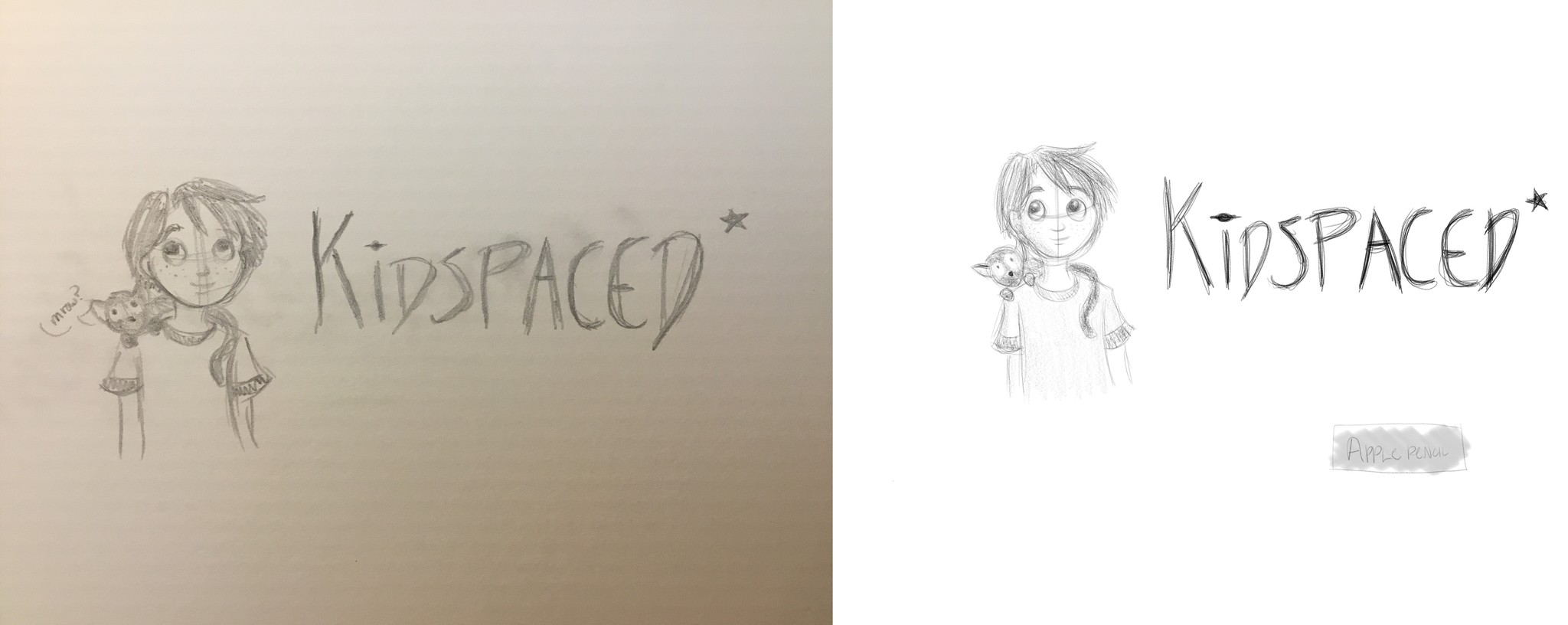
When you draw digitally, there's always some amount of learning curve. "Okay, I can't draw circles that way," "I have to remember to balance my hand off the screen," "I just flat out can't write fast." This doesn't exist with the Pencil.
It is remarkably precise. I have written in what would amount to 4-point font in the Notes app, without zooming, and been able to perfectly trace over those letters. I can draw free-form without worrying about wavering lines. I'm not scared of touching the screen with my palm—a habit five years in the making. And the pressure sensitivity is just so good.
It says something that Apple doesn't ship the Pencil with a "settings" app. Wacom does. So does Microsoft. Even some third-party styluses have preferences for adjusting your pressure choices.
Normally I would be annoyed by this. Everyone draws differently, and everyone's used to pressing against the screen in a different way.
But you know what? I agree with the company here. Apple is essentially saying: This is a tool, just like your HB pencil. You can't tell your HB pencil you want it to make lighter strokes. You have to learn how to use it. You have to trust it.
I trust the Pencil. Its pressure mechanics make sense the way a physical tool makes sense. It doesn't have any weird software glitches; it doesn't accidentally think you've made a hard line and dark black comes out of nowhere. I've been drawing digitally for sixteen years. I've never had a pen with pressure accuracy like this.
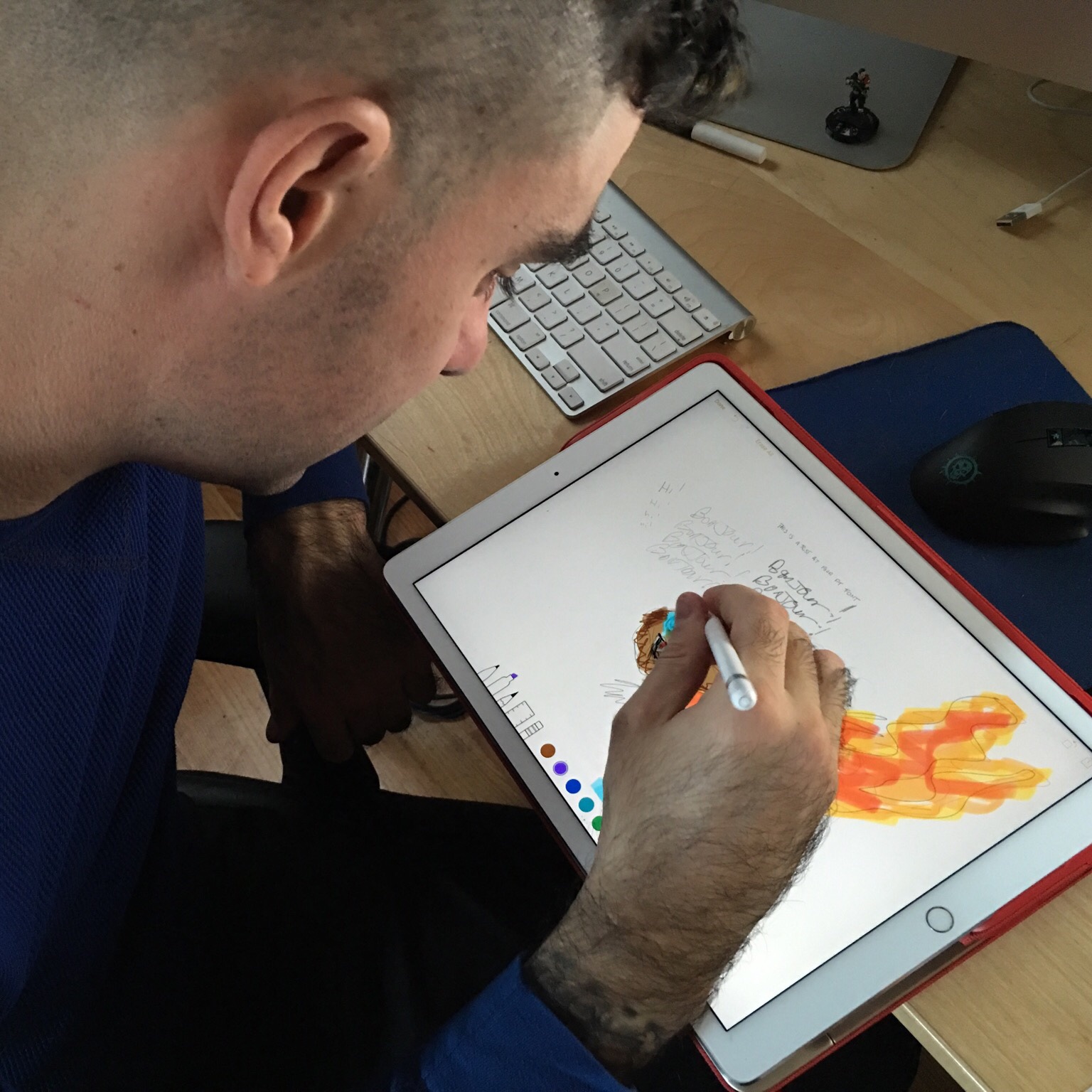
I've made people who have never before in their lives attempted to work digitally pick up the Pencil and start writing and drawing. My boyfriend, who has little to no interest in physical drawing let alone digital tools, was captivated for 20 minutes drawing a little monster. I let my massage therapist write with it and five minutes later she was texting her mother with a Christmas wish list.
For artists, the Pencil isn't perfect, but it's one of the best pens that's come along in fifteen years—and it's new. It's not trying to replicate Wacom's aging technology. It's going a new direction, and can only get better from here. Every artist I've talked to is thrilled.
I chatted with Rich Stevens, author of our Pixel Project comic on iMore and creator of Diesel Sweeties. He said:
"If you're telling me a person with no preconceived notions would find one drastically better than the other, you're a liar. [The] Cintiq is still the bigger, more formally professional tool but the iPad really doesn't have any major issues. It's gonna catch up fast... drawing honestly just feels like I have a sketchbook with unlimited paper. it's just so relaxing."
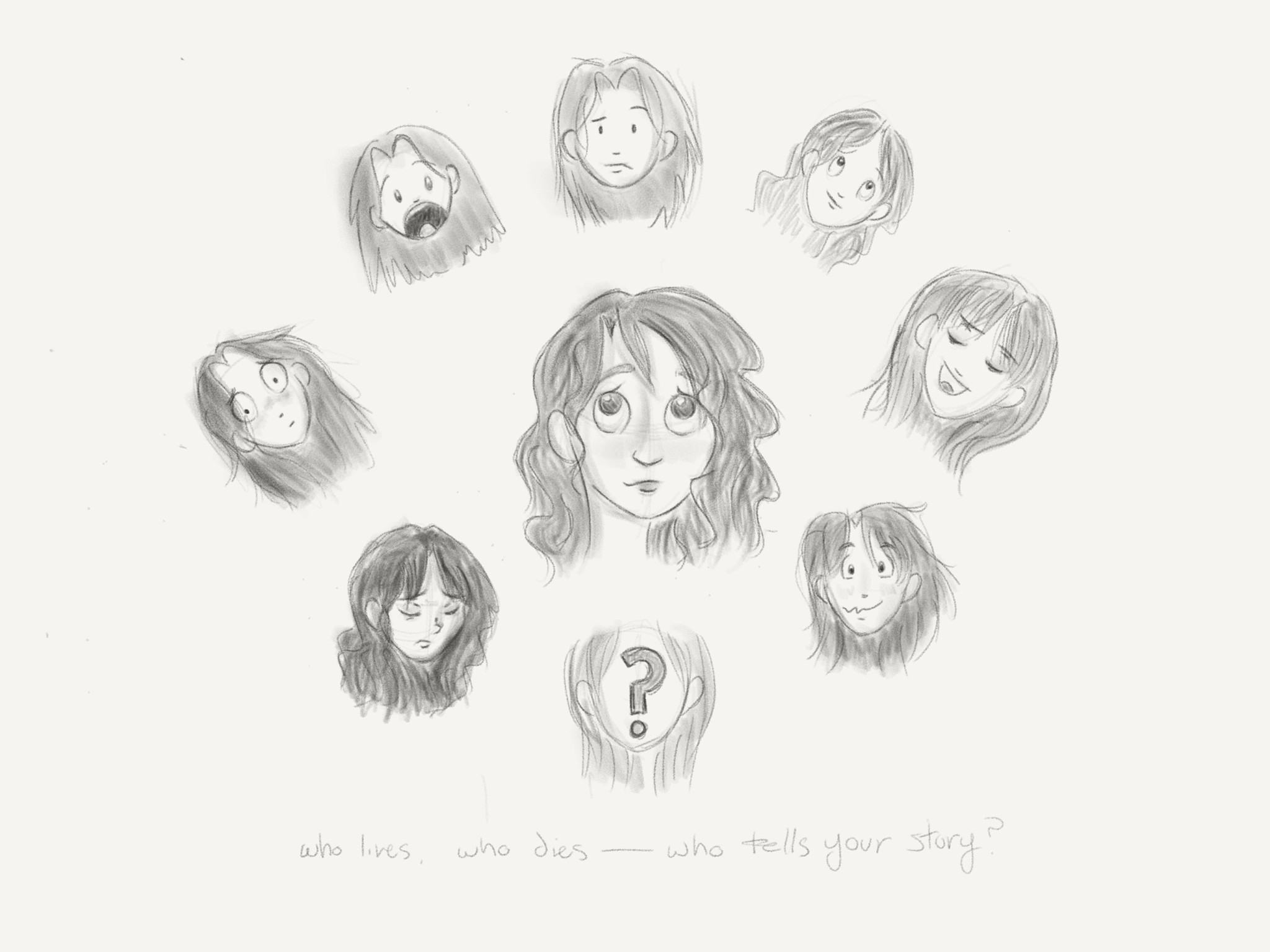
His last comment is the one that sticks with me: The Pencil makes the Pro a true sketchbook. I'd rather carry around the Pencil and Pro than fill up paper Moleskine after Moleskine and lose those drawings to storage boxes and moves. And it's inciting me to draw, write, and sketch more often.
The finger, the pen, the keyboard
I find it interesting that Apple has shipped two accessories with the Pro designed to augment touch interaction: a keyboard, and pen. Funny, really, considering the keyboard replaced the pencil in most of our day-to-day lives. And ever since, we've been looking for bigger and better keyboards. We have epic debates about key size and travel and words per minute. It's what's provoked the debate about the Apple Smart Keyboard's usefulness.
The Apple Smart Keyboard isn't bad. But it's like those third-party styluses—it's trying to haphazardly recreate the desktop experience while compromising on function. The perfect all-digital keyboard is still a long way away.
The Pencil, too, is trying to recreate a tool we use on our desks. But artists aside, it's a tool many of us tossed away for a keyboard as soon as we finished grade school. How many people write longform anymore? How many can still write a full handwritten cursive alphabet?
And I wonder. For those who long-ago gave up doodling in the margins or block lettering, can a presumed-outdated tool actually pull them back in? I see smiles and grins after using a Pencil that I've never seen with even the best hardware keyboard. I can't predict the future. But I can easily believe that Apple is going to sell a metric ton of Pencils. It's going to move iPad Pros—and with luck, new-generation Pencil-supported iPads—off the shelves.
Because it's not just about re-learning to sketch. Says Stevens, "I really like being able to switch between fingers and a pen even when I'm not drawing. [It] keeps my brain limber!" It adds an extra level of interaction to our daily computing lives, and gives us another potential tool in our toolbox.
I hate outlining stories with a keyboard. I love sketching out lists. The Pencil now gives me a way to build out stories and plans in a more creative way than a keyboard and notes app ever could.
I have so much more to say about the Pencil—day five is all about how it compares to a Cintiq and Surface Book, and I put it through some heavy art and writing trials—but I'm going to close with this: It's early days yet. This enthusiasm could wane; I could find the Pencil lost in my bag three months from now.
But this is the kind of enthusiasm I had about my iPhone, and the kind I wanted to—but ultimately failed—to have about the first iPad. This is a tool that's going to help the iPad go places.
And it's going to produce an unholy amount of fantastic art.
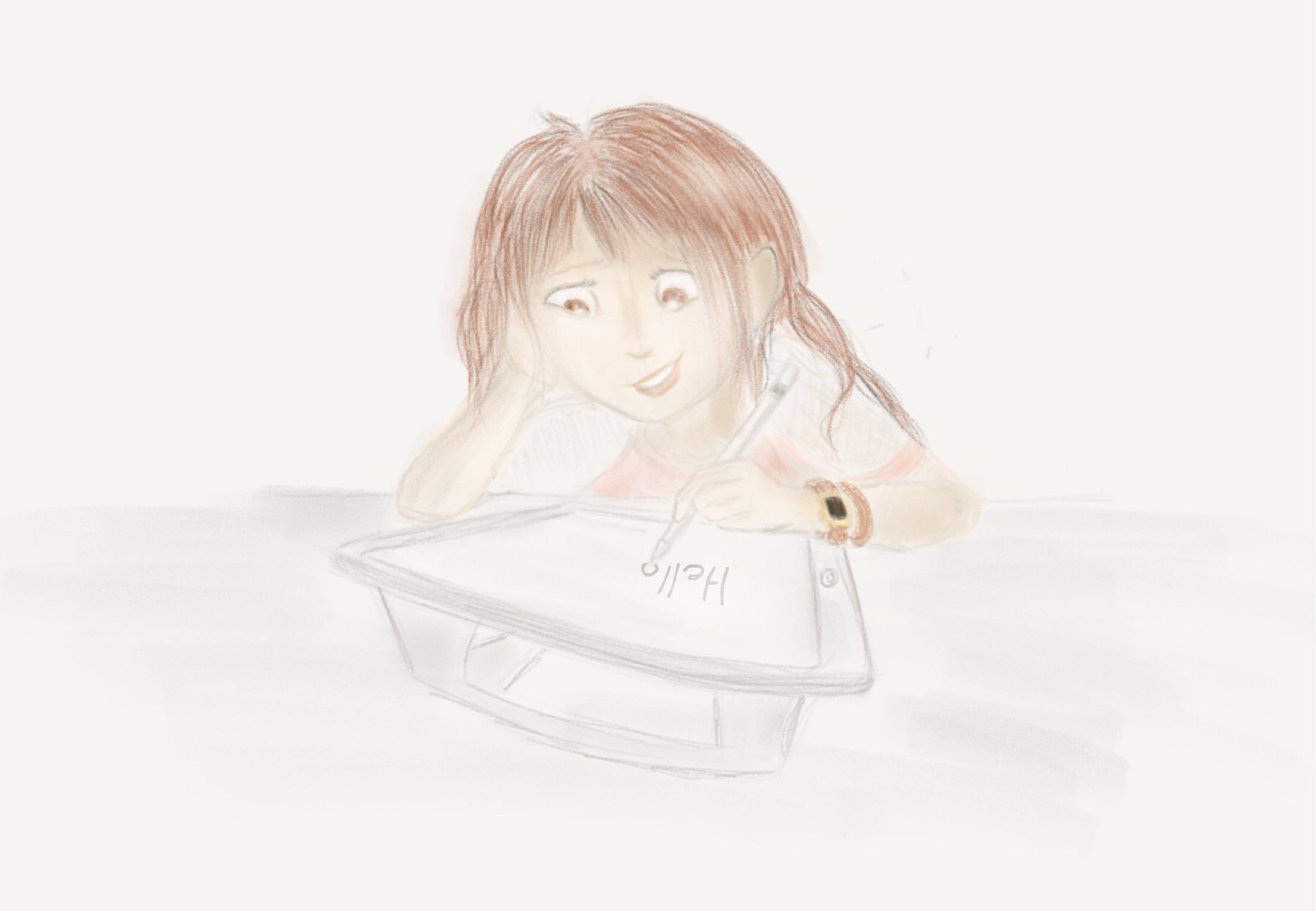
Serenity was formerly the Managing Editor at iMore, and now works for Apple. She's been talking, writing about, and tinkering with Apple products since she was old enough to double-click. In her spare time, she sketches, sings, and in her secret superhero life, plays roller derby. Follow her on Twitter @settern.

